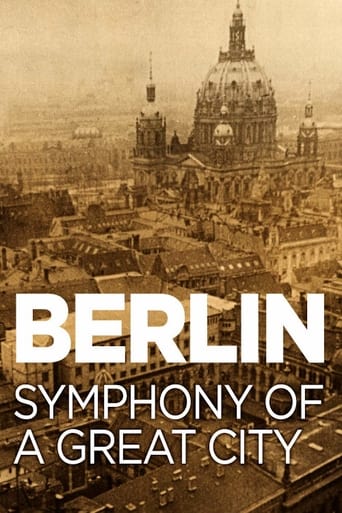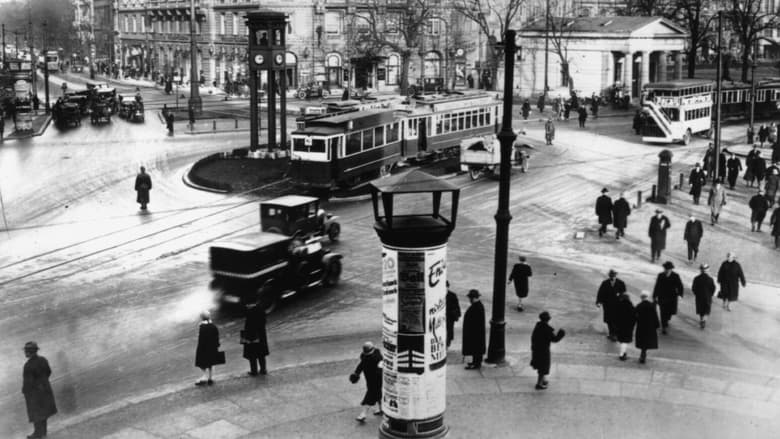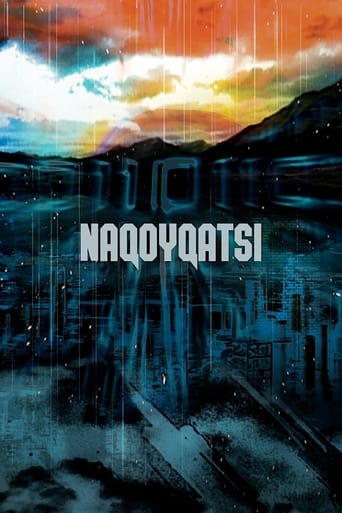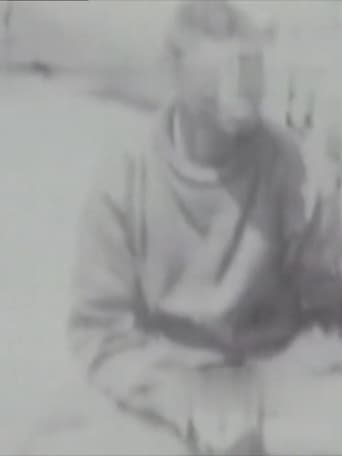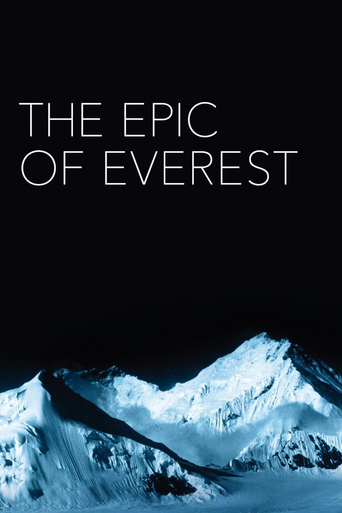Berlin: Symphony of a Great City (1927)
A day in the city of Berlin, which experienced an industrial boom in the 1920s, and still provides an insight into the living and working conditions at that time. Germany had just recovered a little from the worst consequences of the First World War, the great economic crisis was still a few years away and Hitler was not yet an issue at the time.
Watch Trailer
Cast


Similar titles
Reviews
So much average
Absolutely Fantastic
Like the great film, it's made with a great deal of visible affection both in front of and behind the camera.
By the time the dramatic fireworks start popping off, each one feels earned.
"Berlin: Die Sinfonie der Grosstadt" or "Berlin: Symphony of a Great City" is not only evidence of the fact that "Großstadt" was once written with 2 s, but it is also a black-and-white silent film documentary about Germany's capital. This one is from almost 90 years ago, so it includes recordings exclusively from before the 2 wars. I have lived in Berlin for almost my entire life, which made me especially curious about this film that runs slightly over an hour. Unfortunately, I did not really make a connection with Ruttmann's work here. It's certainly nice to see people from back then and how they just live and interact with each other, but honestly without my knowledge that this is Berlin, I probably would not even have thought of that. There aren't really any famous places or so to see or anything you could recognize if you know Berlin. This is also why this documentary does not have half the charm I wished it would have. Not recommended.
This documentary has much to answer for, since it started a trend for city-based films: in its case, being a non-narrative look at the thriving German metropolis (though there were a number made in that vein), the original impact has essentially faded with imitation – and its place in the cinematic pantheon overtaken by such classic dramas of 'ordinary people' as F.W. Murnau's SUNRISE: A SONG OF TWO HUMANS (1927) and King Vidor's THE CROWD (1928). The end result – bafflingly split into five unnamed acts, thus boasting no specific characteristic to differentiate them! – nevertheless makes for a veritable time-capsule of an era that is long-gone and, therefore, looked upon now with a certain degree of romantic nostalgia.The style – among the credits are such luminaries of German Expressionism as Carl Mayer and Karl Freund! – is intermittently flamboyant (notably the opening rapid-fire montage simulating a speeding train's entry into Berlin and the concluding rotating shot of the city at night dissolving into a full-blown fireworks display) but generally pretty straightforward, content merely to document the bustling ongoing activity – encompassing virtually all strata of society – from early morning till after dark (literally "a day in the life"). Still, for all its supposed naturalism (including the unsightly image of a pair of pigeons nonchalantly pecking away at a turd on the pavement!), certain scenes were obviously staged for maximum impact – such as a tussle between two men that causes such a commotion as to necessitate Police intervention (which is then conveniently captured from all possible angles!).
Many times the most exciting trip is right around the corner; you don't need to go to some distant place as this Herr Graf often does ( of course common people can't afford it anyway ) or travel to exotic countries to discover and enjoy new landscapes and the different customs and accents of their people. A perfect example can be found in the film "Berlin – Die Sinfonie der Großstadt" (1927) wherein its director, Herr Walter Ruttmann, our avant-garde and eccentric cicerone, takes the audience on a special and experimental trip around the city of Berlin.It's certainly very complicated for a conservative German count, accustomed to simple classic film narrative, to describe this film but basically it is a modern, audacious, poetic, suggestive and unique portrait of a city that no longer exists. It is an historical picture of Weimar Berlin enriched by brilliant editing (that sometimes gives the viewer a sense of vertigo) and dazzling images. The film depicts the daily lives of the citizens of Berlin: young and old, rich and poor, people going about routine jobs in factory or office and the thrilling night life. Trains, machines and architecture are all part of a symphony of frenzied activity orchestrated by Herr Ruttmann in a superb and imaginative homage to the German capital city and its inhabitants.And now, if you'll allow me, I must temporarily take my leave because this German Count must wander through the empty Berlin Weimar streets.Herr Graf Ferdinand Von Galitzien http://ferdinandvongalitzien.blogspot.com
This fascinating classic never loses its ability to capture the attention and stimulate the imagination of its viewers. The technique is creative and resourceful, the photography is beautiful, and the images are memorable. Everything fits together to make the idea work wonderfully well.The opening sequence with the train is an exciting and well-conceived way to start the movie. As the pace picks up, the rush of images creates an abstract but very realistic sensation, and this train 'ride' is so enjoyable that you almost don't want it to stop.But it's when the train reaches the station that the main part of the movie begins, presenting a very interesting stylized portrait of a typical day in Berlin, through a carefully-chosen variety of scenes and sights. It's interesting to see how the train imagery keeps coming back from time to time, and this, along with the obvious passage of time as the day progresses, gives it a coherence that makes it much more than just a collage of interesting images and scenes.There are many interesting individual sequences, but what makes it such a gem is the way that everything fits together. The overall effect is remarkable, and it really has to be seen to be appreciated.

